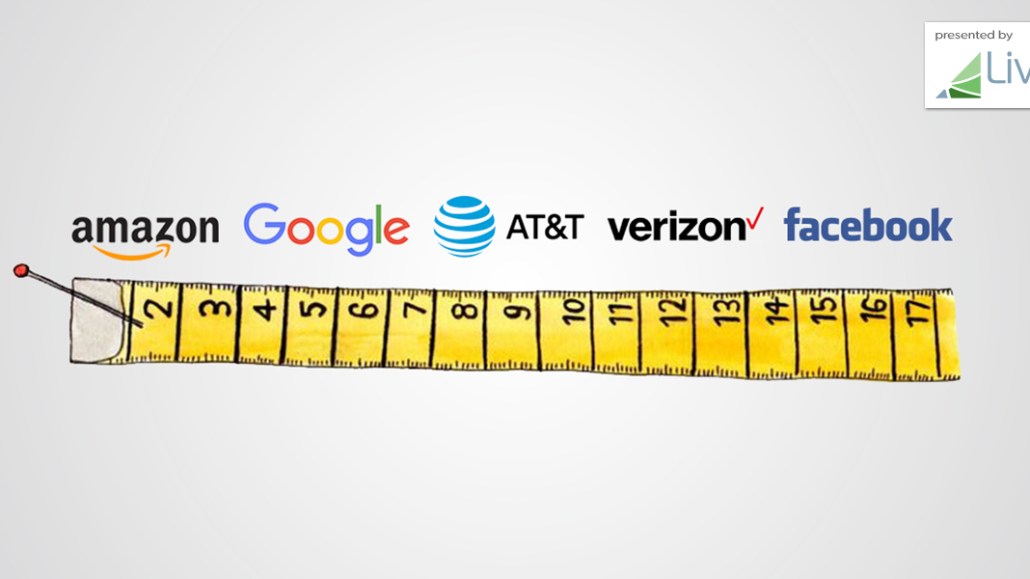From brand safety to metrics messes: What advertisers will talk on at the ANA confab

Today, around 3,000 marketing executives will gather at the ANA Masters of Marketing Conference in Orlando, Florida, to hear well-crafted brand stories on stage from marketing heads at big ad spenders like Procter & Gamble, JPMorgan Chase and Walmart.
While those presentations could be inspiring, they may not necessarily touch on critical or controversial marketing topics like Russian ads, and fake news on Facebook and Google. Beyond the main stage at the conference, brand, agency and technology executives who are attending said they will have conversations around brand safety, measurement errors, consultancies and more in their meetings.
Brand safety in the spotlight
Advertisers have been increasingly sensitive to their ads appearing to objectionable content since they found their ads showing up next to extremist content on YouTube. And the ongoing investigation into fake accounts from Russia on Facebook and Twitter is pushing brands to have hard conversations with their agencies about making changes to clean up the media supply chain and holding platforms like Facebook and Google to a high standard when it comes to their practices, according to Anne Bologna, chief engagement officer for agency iCrossing.
“Debate around critical topics is healthy, but that is not ever really what gets shared out through the [ANA] program,” said Bologna. “As marketers and their partners retreat to more intimate meetings in Orlando, you’ll likely have people talking about how to future-proof the brand and its marketing operation, and how to do so in a way that protects the integrity of the brand and its budget.”
Metric messes
Facebook’s been beaten up repeatedly over its many metrics challenges. For instance, in May of this year, Facebook mischarged some media buyers for clicks on video carousel ads; and last November, Facebook miscalculated the amount of time people spent on an Instant Article.
“We are becoming less enthusiastic about investing our ad dollars on Facebook,” said a New York-based media investment head from a big brand. “It started with the measurement issue last year, and then brand safety concerns like Russian ads. Facebook is also very protective of its data so we can’t learn much about our consumers.”
Figuring out attribution
P&G reported that it cut somewhere between $100 million and $140 million in digital marketing spend in the June quarter because of brand safety concerns and ineffective digital ads. Unilever, too, is making marketing cuts due to similar reasons. At Dmexco this year, P&G’s brand chief Marc Pritchard also called for tech companies to solve the problem of annoying ads, make the ad experience better for consumers, and trigger sales.
The key, perhaps, is to draw a correlation between ad performance across different channels and sales results. Steven Rosenblatt, president for Foursquare, thinks that marketers must take ownership of understanding their own data strategy and make data a core competency. For instance, having an agency send out an RFP that maps to a viewability KPI may not necessarily move the needle in terms of brand metrics or sales, he said.
Meanwhile, Alicia Hatch, CMO for Deloitte Digital, said she will also focus on having conversations around business results, as the role of the CMO has changed from “being seen as simply a cost center to a true growth driver of the business.”
Here come the consultants
Consultancies have aggressively acquired design agencies to get into the brand marketing world. Brands are not yet sure if they should work with consulting firms, and WPP chief Martin Sorrell said at Advertising Week last week that “people are too worried — I don’t think consultancies are head-to-head with agencies.” But the threat of consultancies is something Matt Weiss, managing director of agency Huge, will address in his client meetings at ANA Masters of Marketing.
“Transparency and brand safety are important media issues,” said Weiss. “But for us, it’s more important to talk to [clients] at the ANA about how we can help create brand experiences that people care about in new ways and how they can grow their business through such experience.”
Weiss said he would have between five and 10 client meetings at the conference, and he hopes those conversations help differentiate Huge from the likes of Accenture and Deloitte.
“They are a real threat. In my view, they have unique access to C-suite executives, and they have deep pockets,” he said. “We are going against them [in pitches] more often, so I want clients to know that we have a legacy of creativity — design and user experience are embedded here.”
More in Marketing

The Disney-OpenAI deal and generative AI copyright concerns
This week’s Digiday Podcast delves into the copyright concerns and potential trademark issues surrounding brands’ use of generative AI tools, with Davis Wright Tremaine partner Rob Driscoll.

‘There’s tremendous opportunity’: NBA sponsorships lead on European expansion
David Brody, vp, global partner management group lead at the NBA, explains its pitch to sponsor brands and how expansion isn’t far off.

New partnerships, marketing fuel BNPL’s holiday surge
This holiday season, more brands deployed BNPL services with different payment options beyond the more familiar “pay-in-four” structure.







